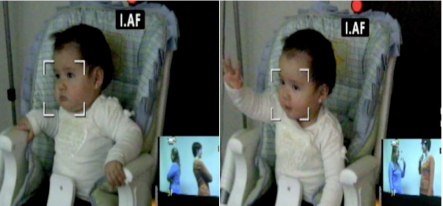Understanding social structure
This line of research investigates the development of our ability to think about individual people as members of a larger social strucutre. My work suggests that starting in infancy, humans are able to make inferences that certain people are more likely to affiliate than others. For instance, infants expect people who share food preferences, or who speak the same language to be more likely to affiliate with one another than people who like different foods or speak different languages. In ongoing studies I am asking about how the features we use to make predictions about alliances change over time. As example, while even very young children understand that people who spend more time together are more likely to be friends, older children understand that more complicated cues, such as taking someone's side in an argument, can indicate friendship.
Current Research




Reasoning about food choice
Humans consider many facors when deciding what to eat. While children do not seem to able to reason about nutritional properties until relatively late in development, my research suggests that even infants can reason about the social nature of food selection. In a series of studies I investigate whether infants use information about social identity to decide whether people will agree in their food preferences and dispreferences. Additionally, I ask whether these inferences about foods are domain specific by looking at whether infants think differently about food preferences than about object preferences.


Social communication
I am interested in how people can avoid miscommunication. Miscommunication can happen when a speaker or listener fails to think about their partner's view, and instead behaves egocentrically. I study whether certain social experiences, such as exposure to a diverse linguistic environment, help
people avoid miscommunication. Our findings suggest that regular multilingual exposure may provide extensive practice taking other people's linguistic perspective, which can lead to an ehanced communication by leading a listener to take the speaker's perspective in order to understand her intended meaning.